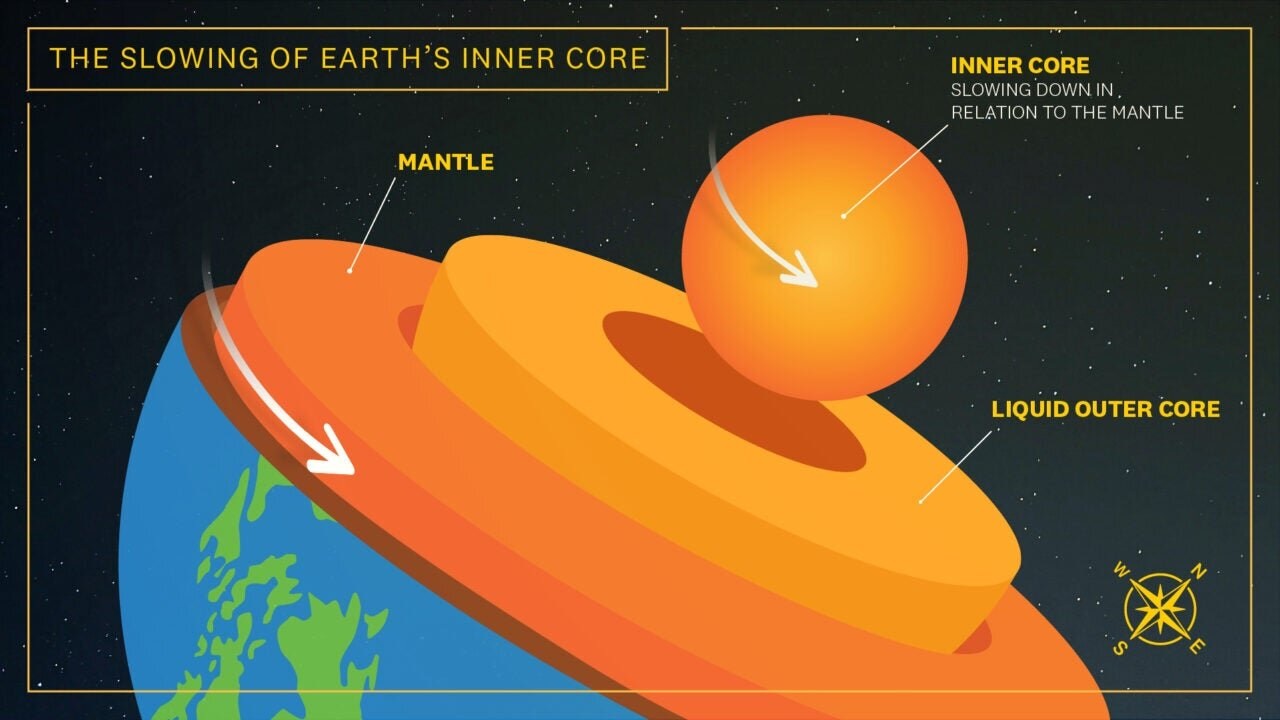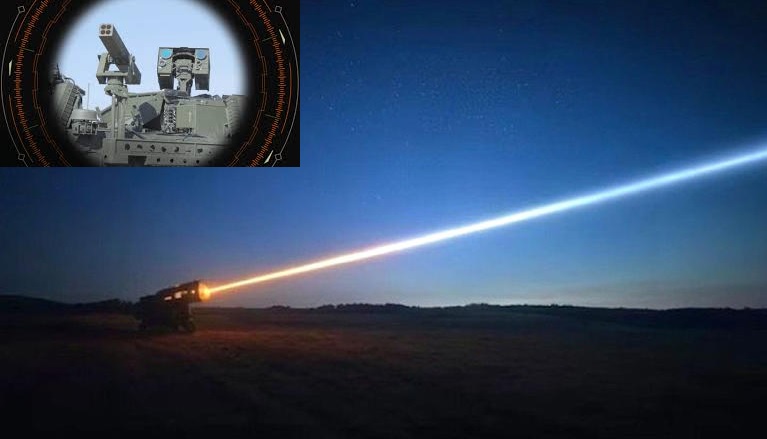Scientists Find that Earth's Core Slows Down Rotation ,Raising Questions About Planetary Mechanics

Scientists have discovered that Earth's inner core is rotating more slowly than the planet's surface, a significant finding that could impact the Earth's magnetic field and the length of our days.
Scientists from the University of Southern California (USC) have made a significant discovery: the Earth's inner core is rotating more slowly than the planet's surface. This groundbreaking research, published in Nature, raises important questions about planetary mechanics and could have a notable effect on the stability of Earth's magnetic field and the duration of our days.
The Earth's inner core is a super-hot, super-dense sphere of iron and nickel, located over 4,800 kilometers beneath our feet. For decades, it has been known that the inner core rotates independently of the Earth's surface, but the new study indicates that this rotation has been slowing down since around 2010. This marks the first time in approximately 40 years that the inner core is moving slower than the Earth's mantle.
John Vidale, Dean's Professor of Earth Sciences at the USC Dornsife College of Letters, Arts and Sciences, led the research team. They analyzed readings from 121 repeating earthquakes recorded between 1991 and 2023 around the South Sandwich Islands in the South Atlantic. They also used data from Soviet nuclear tests conducted between 1971 and 1974, as well as French and American nuclear tests from other studies on the inner core.
"When I first saw the seismograms that hinted at this change, I was stumped," said Mr. Vidale. "But when we found two dozen more observations signaling the same pattern, the result was inescapable. The inner core had slowed down for the first time in many decades. Other scientists have recently argued for similar and different models, but our latest study provides the most convincing resolution."
The slowing of the inner core's rotation is attributed to the turbulent movement of the surrounding liquid outer core, which generates the Earth's magnetic field, and the gravitational pulls from dense regions in the overlying rocky mantle. This interaction could eventually alter the entire planet's rotation, prolonging our days by fractions of a second. Mr. Vidale explained that the change is minuscule, "on the order of a thousandth of a second, almost lost in the noise of the churning oceans and atmosphere."
The research team is now focused on charting the trajectory of the inner core in even greater detail to uncover why it is shifting. "The dance of the inner core might be even more lively than we know so far," said Mr. Vidale.
The findings have significant implications for our understanding of Earth's internal dynamics and could lead to new insights into the planet's history and future. As scientists continue to monitor the inner core's movement, we may learn more about how these deep-seated changes affect the surface environment and long-term climate patterns.



